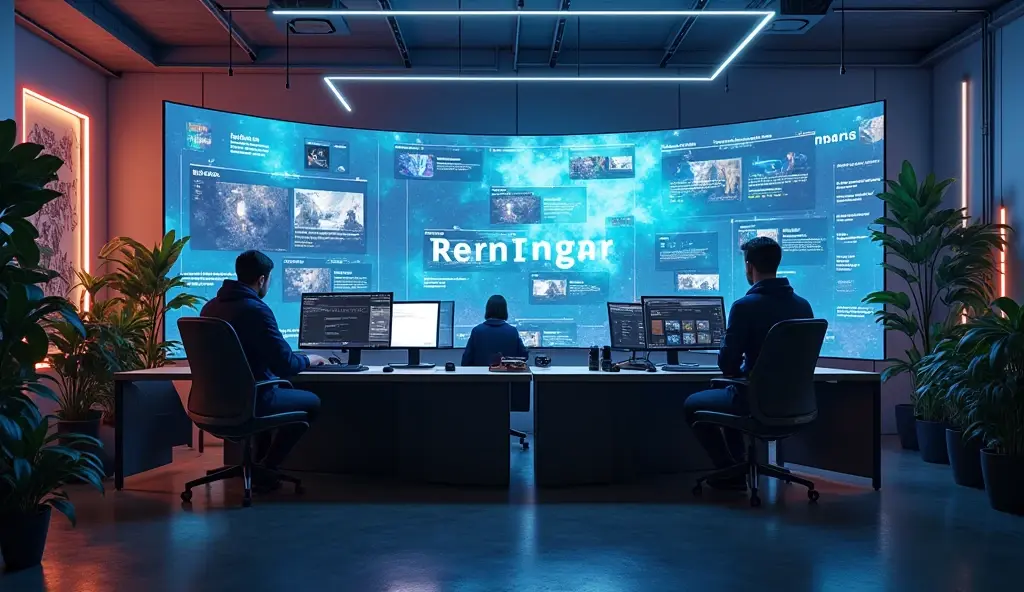How to Use AI to Create and Sell Custom Games
The gaming industry has seen a transformative shift with the integration of artificial intelligence (AI). Developers and entrepreneurs are increasingly leveraging AI tools to create unique, engaging, and personalized gaming experiences. If you’ve ever wondered how to use AI to create and sell custom games, this guide will walk you through the essential steps, tools, and strategies to succeed in this exciting space.
How to Make Money with AI-Powered Blogs
Understanding the Role of AI in Game Development
AI has revolutionized game development by automating complex tasks, enhancing creativity, and enabling personalized gaming experiences. From procedural content generation to intelligent non-playable characters (NPCs), AI significantly reduces development time while improving quality.

Key Benefits of Using AI in Game Development:
- Automated Content Creation: AI tools can generate levels, environments, and even storylines, saving time and resources.
- Improved Gameplay: AI-powered NPCs and adaptive difficulty settings make games more engaging and challenging.
- Cost Efficiency: Automating repetitive tasks reduces the need for large development teams.
- Personalization: AI enables the creation of tailored gaming experiences based on player preferences and behavior.
Make Money by Automating HR Services with AI
How to Use AI to Create Custom Games
Step 1: Define Your Game Concept
Start with a clear vision of the type of game you want to create. Whether it’s an adventure game, puzzle game, or multiplayer platform, having a solid concept will guide the development process. Use AI brainstorming tools like ChatGPT or Jasper to refine your ideas and generate creative concepts.
Step 2: Choose the Right AI Tools
There are numerous AI-powered tools designed specifically for game development. Here are some popular options:
- Unity ML-Agents: A machine learning toolkit for creating intelligent game agents.
- Promethean AI: Assists in generating realistic game environments.
- GANs (Generative Adversarial Networks): Used for creating game assets such as textures, characters, and backgrounds.
- AI Dungeon: Helps in generating complex and interactive storylines.
Step 3: Develop Procedural Content
Procedural content generation (PCG) uses AI to create game levels, landscapes, and other elements dynamically. Tools like Houdini and Tilemancer make it easy to generate intricate and visually appealing designs with minimal effort.
Step 4: Design Intelligent NPCs
AI can help create NPCs that adapt to player behavior, providing a more immersive experience. For instance, reinforcement learning techniques allow NPCs to learn and improve over time, offering unique challenges to players.
Step 5: Test and Optimize Your Game
AI-powered testing tools like Test.ai can identify bugs, optimize game performance, and ensure compatibility across devices. Continuous testing is essential to delivering a polished and bug-free game.
Emerging AI Trends You Can Profit From
How to Sell Custom Games Using AI
Step 1: Build a Portfolio
Showcase your game development projects on platforms like Behance, ArtStation, or your personal website. Highlight how AI was used to create unique gaming experiences.
Step 2: Choose a Distribution Platform
Decide whether you want to self-publish or partner with platforms like Steam, Epic Games Store, or Itch.io. Self-publishing offers more control, while partnerships provide broader reach.
Step 3: Leverage AI for Marketing
AI tools like Jasper or Writesonic can generate compelling ad copies, blog posts, and promotional content. Use AI analytics tools to target the right audience and maximize conversions.
Step 4: Implement In-Game Monetization
AI can help design effective monetization strategies, such as in-app purchases, ads, or subscriptions. Analyze player behavior to offer personalized purchasing options.
Step 5: Engage Your Audience
Use AI-driven chatbots to interact with players, gather feedback, and build a loyal community. Platforms like Discord offer integration options for AI-powered moderation and engagement tools.
Top AI Trends in Game Development
- Generative AI for Art and Music: Tools like DALL-E and AIVA create stunning visuals and soundtracks tailored to your game’s theme.
- Adaptive Storytelling: AI algorithms adjust the storyline based on player choices, making each playthrough unique.
- Realistic Simulations: AI-driven physics and animations create lifelike gaming experiences.
- AI-Powered Testing: Automated testing ensures smoother gameplay and fewer bugs.
- Cross-Platform Development: AI helps optimize games for multiple devices and platforms efficiently.
Challenges and Ethical Considerations
While AI offers immense potential, it’s important to address challenges like data privacy, algorithm bias, and copyright issues. Ensure that AI-generated assets comply with intellectual property laws and prioritize ethical practices in development and monetization.
Top Future-Proof AI Careers That Pay Well
Final Thought
Learning how to use AI to create and sell custom games can open doors to unprecedented opportunities in the gaming industry. By leveraging AI tools and techniques, developers can produce innovative games, streamline processes, and maximize profits. With a clear strategy and the right tools, the possibilities are endless in this AI-driven gaming era.
Read More How to Make Money with AI Fast Online


1 Comment